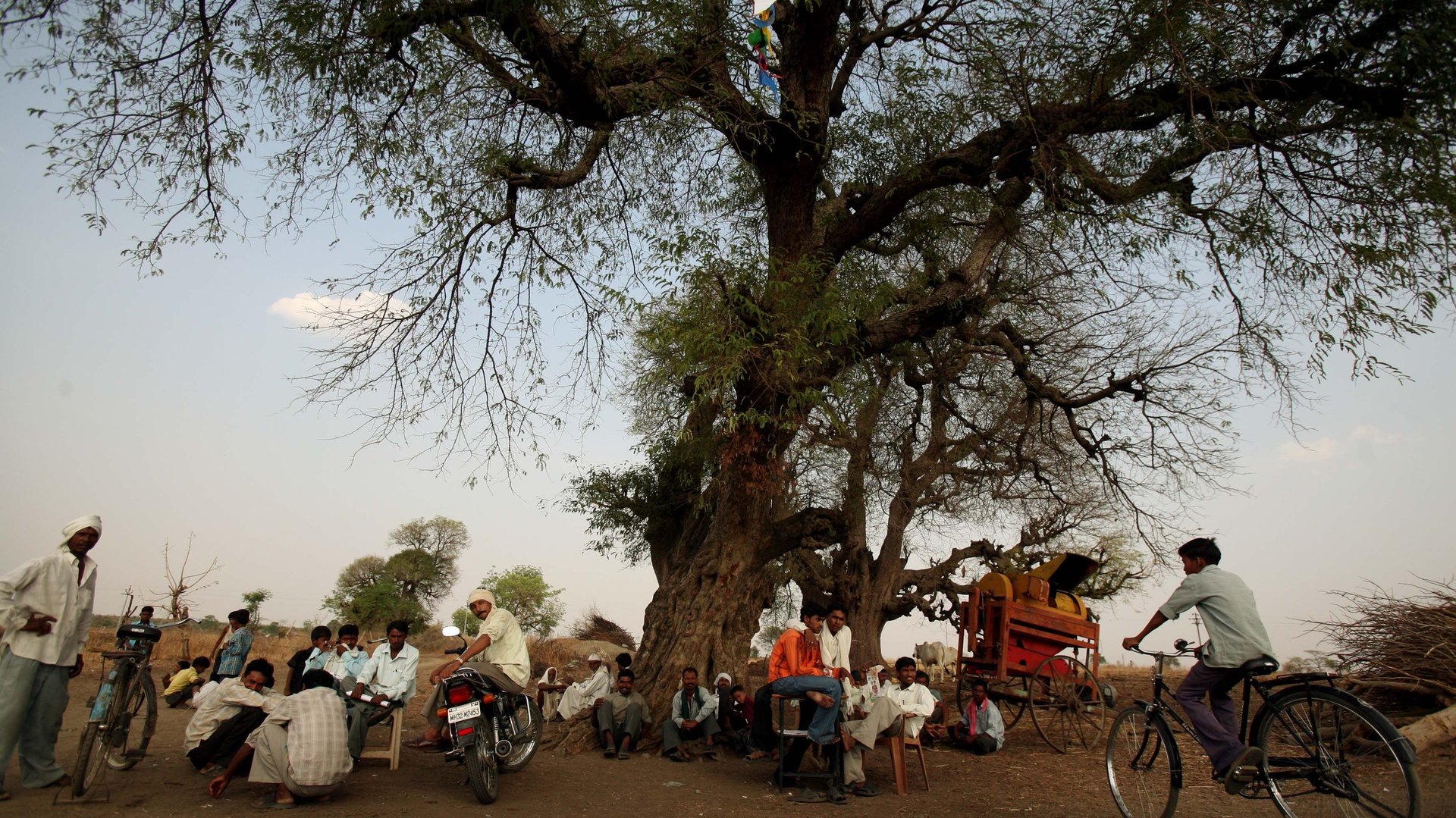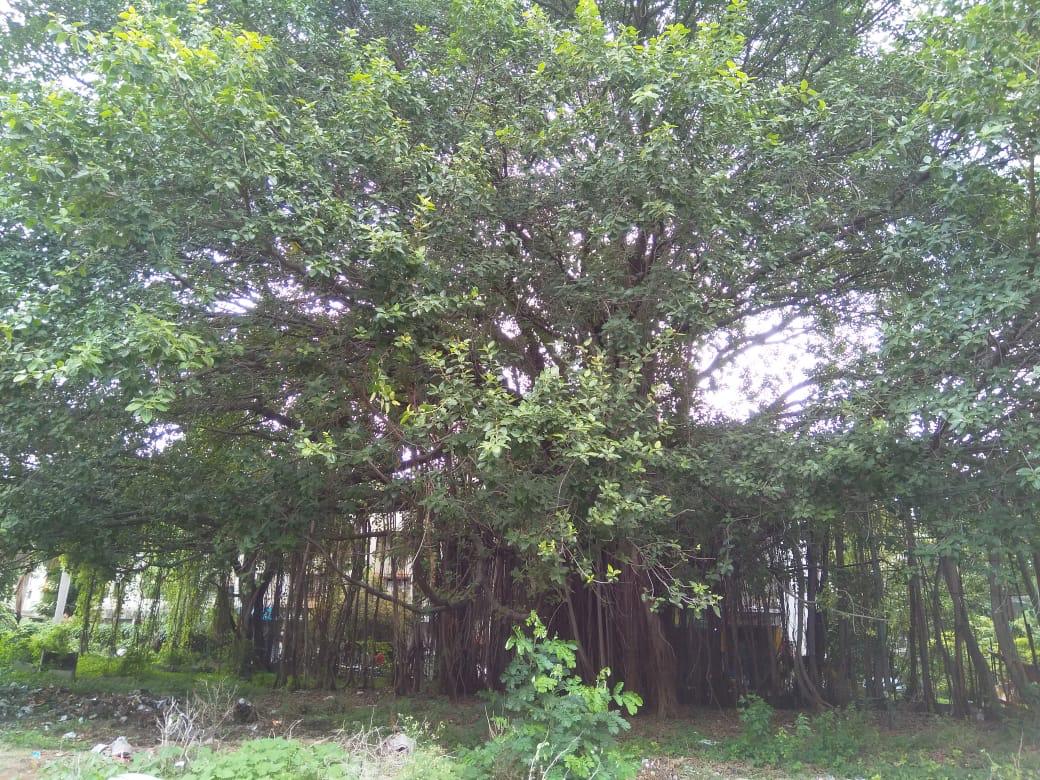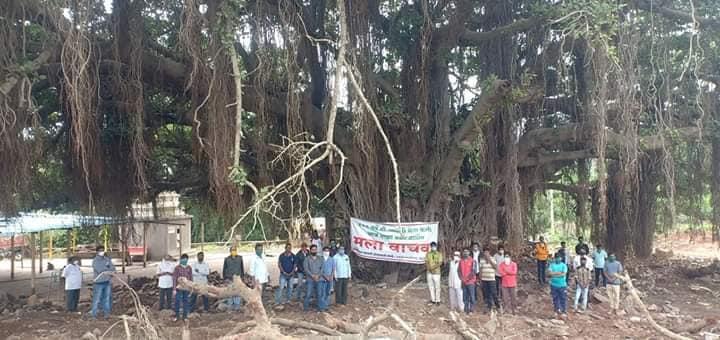One Indian state is preserving its century-old trees with heritage tags
In an effort to save century-old trees that have been dying in Maharashtra, the state forest department has announced that they will prepare a database of heritage trees.


In an effort to save century-old trees that have been dying in Maharashtra, the state forest department has announced that they will prepare a database of heritage trees.
The officials have said that concerned citizens and non-governmental organisations (NGO) will be roped in to help with the project. According to official data with the environment ministry, Maharashtra ranks second in the number of trees felled in the 2016-2019 period with over 1.07 million trees. About 1.2 million trees were axed in Telangana in this period.
In an urban setting, heritage trees absorb polluting gases, prevent soil erosion, especially along urban water bodies, and serve as a habitat for biodiversity, according to a 2020 report on heritage trees of urban India. At the same time, they are a source of food, medicine, and raw material for us and are also of cultural and sacred significance, the report added.
Sachin Punekar, a Pune-based botanist and founder-president of Biospheres, an environmental NGO, stated that the initiative by the state government would be beneficial for conservation. However, he said, a tree shouldn’t be given the heritage tag just because it is old, but aspects such as its ecological value, and cultural and historical significance must also be taken into consideration.
Experts say thousands of trees are chopped off for development work, but now that the government has taken a decision to conserve these age-old trees, it would be difficult to cut these trees.
Anish Pardeshi, a researcher working in the Western Ghats, stated that the initiative will pave the way for the conservation, documentation, and protection of trees. “The motive here will go beyond the idea of just saving the tree alone but will help protect the dependent fauna, insects, butterflies, and birds. Going ahead, it will also help to connect ordinary citizens to the conservation movement,” he commented.
Identifying heritage trees
Heritage trees have great ecological value as they tolerate heavy clays and infertile or waterlogged soil, provide shade in parks, pastures, and roadsides, serve as windbreakers, stabilise the soil (preventing desertification) and are a food source for animals with long necks or trunks, according to the CPR Environmental Education Centre (CPREEC), an environmental education body created in association with union ministry of environment, forest and climate change.

In July this year, Sahyadri Devrai, an environmental NGO in Maharashtra, approached the state government with the idea of protecting heritage trees. Sayaji Shinde, an actor and founder of Sahyadri Devrai, said that he took the idea to the state government, which decided to take it forward.
The organisation will identify the trees of topmost importance, in regards to shade, medicinal use and the amount of oxygen that the trees can supply, he explained. He said they will be working with the forest department across the state for this project. According to the CPREEC, a heritage tree is defined as a tree with some historical, environmental, or aesthetic value and it should be approximately sixteen inches in diameter or more when measured two feet above the ground level.
Sahyadri Devrai has created a form, which is being distributed in every district in the state, and the oldest citizen is being roped in to help in identifying old trees in the area.
Sachin Chandane, a Panvel-based member of Sahyadri Devrai, informed that the identification of heritage trees has already begun in June and now they are contacting zilla parishads and gram panchayats.
A few trees have already been shortlisted by the NGO and are awaiting government approval.
This includes a 200-year-old Ficus benghalensis, which is known as “Vadache Zaad” in Marathi. The tree is present in Pune’s Karve Nagar and has been a favourite among residents for years. Another such tree is a 300-year-old Ficus microcarpa, known as “Nandruk” by the residents of Gogalwadi area, in the outskirts of Pune. In July, the residents of the Bhose village in Sangli district had protected a 400-year-old banyan tree from getting axed for a state highway project. The villagers rallied around an old tree with a canopy of over 400 square metres.

Several states like Uttar Pradesh and Punjab have adopted this initiative to tackle the dwindling numbers of heritage trees.
In January this year, chief justice SA Bobde had said, in a hearing related to felling of trees in West Bengal, “When you cut a heritage tree, look at the value of the oxygen the tree produced all these years. Then try to compare it to how much you would have to pay if you were to have to buy it from somewhere.”
Citizens’ role
When Sahyadri Devrai’s Shinde approached the state government, it received a nod from deputy chief minister Ajit Pawar and other members who were present for the meeting, which included forest officials and environmentalists.
Deputy CM Ajit Pawar said that the state government is striving to ensure that old trees in the state are conserved. The heritage entitlement, he said, is just one of the attempts. He informed that the government intends to give a heritage tag to 10 trees in every district and then conserve them in the best possible way by raising funds.
“We are ambitious that this will help in people engagement and they will be aware and keen on conserving the trees and environment. The intent is that every individual must be educated about the trees and make an effort towards conservation. We will be closely working with NGOs like Sahyadri Devrai for many such plantation and conservation drives in the coming days,” Pawar added.
The government believes that people’s participation in such projects is important as it stresses on creating awareness and inculcates a sense of responsibility among people.
Botanist Punekar emphasised that stress should be laid on planting and conserving old native trees as those of foreign origin will be ravaged during strong storms and downpours as they don’t adjust well in an alien ecosystem and don’t fit in with other indigenous foliage.
He stressed that the state government should appoint a committee for this project which will consist of forest officials, an environmentalist, a botanist, and an ornithologist who will review each tree personally.
This post first appeared on Mongabay-India. We welcome your comments at [email protected].